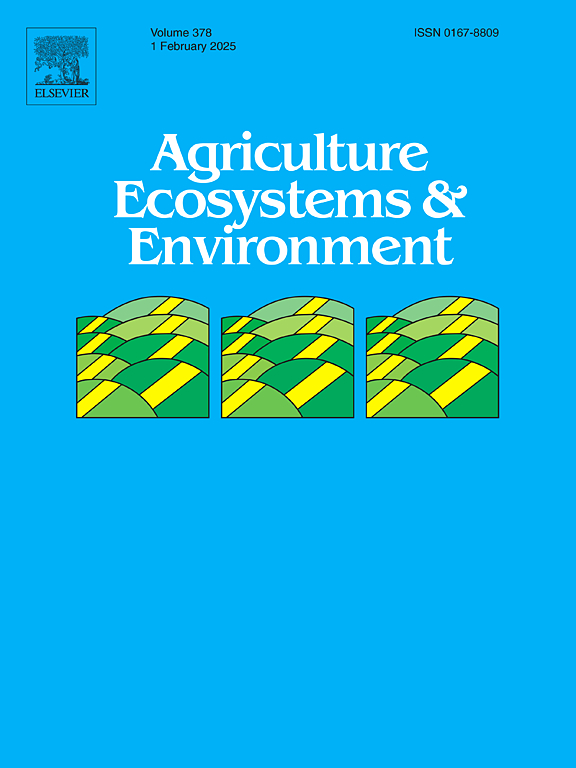Agricultural diversification across spatial levels – A contribution to resilience and sustainability?
IF 6
1区 农林科学
Q1 AGRICULTURE, MULTIDISCIPLINARY
引用次数: 0
Abstract
Decades of efficiency-oriented agricultural intensification have raised sustainability and resilience concerns. Diversification aims to address these issues but varies across time, space and system levels, which hinders an assessment of success of diversification and makes transfer to other regions difficult. We classified diversification measures from field to landscape through a systematic review of 142 papers on intensive agricultural systems in temperate climates. Most measures were at field and farm levels, with fewer at landscape level. Since biodiversity requires provision and maintenance at the landscape level rather than just at the field or farm level, the limited emphasis on landscape-level diversification measures highlights a significant knowledge gap. We further analyzed the impact of diversification on sustainability (integration of environmental, economic, social targets) and resilience capacities (robustness, adaptation, transformation). We show that specific diversification levels were linked to specific sustainability targets and resilience capacities. Environmental aspects are mainly addressed at the field level, economic aspects at the farm level, and social aspects, which are less frequently addressed, are also primarily tackled at the farm level. Resilience is often equated with robustness towards economic (farm) stability. Adaptation relates to climate change and economic instability, while transformation, though rarely addressed directly, emphasizes societal change. Our findings suggest that the concepts of resilience and sustainability are interconnected: resilience can be understood as a property of a system, while sustainability is the overarching target. In literature, transformation relates to societal changes for better integrating social, economic and environmental targets. In contrast, robustness and adaptation address environmental or economic aspects with less linkage to integration of sustainability as a whole. While agricultural diversification is often associated with improved resilience and sustainability, most studies on diversification remain vague about the causal linkage to those concepts. Literature on diversification often focuses only on individual aspects of sustainability or resilience, which undermines both concepts, as it is the holistic consideration of all aspects together that makes a system sustainable or resilient. Our research highlights that diversification at all spatial levels is necessary to achieve resilient and sustainable systems, as each level of diversification addresses distinct sustainability goals or resilience capacities.
求助全文
约1分钟内获得全文
求助全文
来源期刊

Agriculture, Ecosystems & Environment
环境科学-环境科学
CiteScore
11.70
自引率
9.10%
发文量
392
审稿时长
26 days
期刊介绍:
Agriculture, Ecosystems and Environment publishes scientific articles dealing with the interface between agroecosystems and the natural environment, specifically how agriculture influences the environment and how changes in that environment impact agroecosystems. Preference is given to papers from experimental and observational research at the field, system or landscape level, from studies that enhance our understanding of processes using data-based biophysical modelling, and papers that bridge scientific disciplines and integrate knowledge. All papers should be placed in an international or wide comparative context.
 求助内容:
求助内容: 应助结果提醒方式:
应助结果提醒方式:


